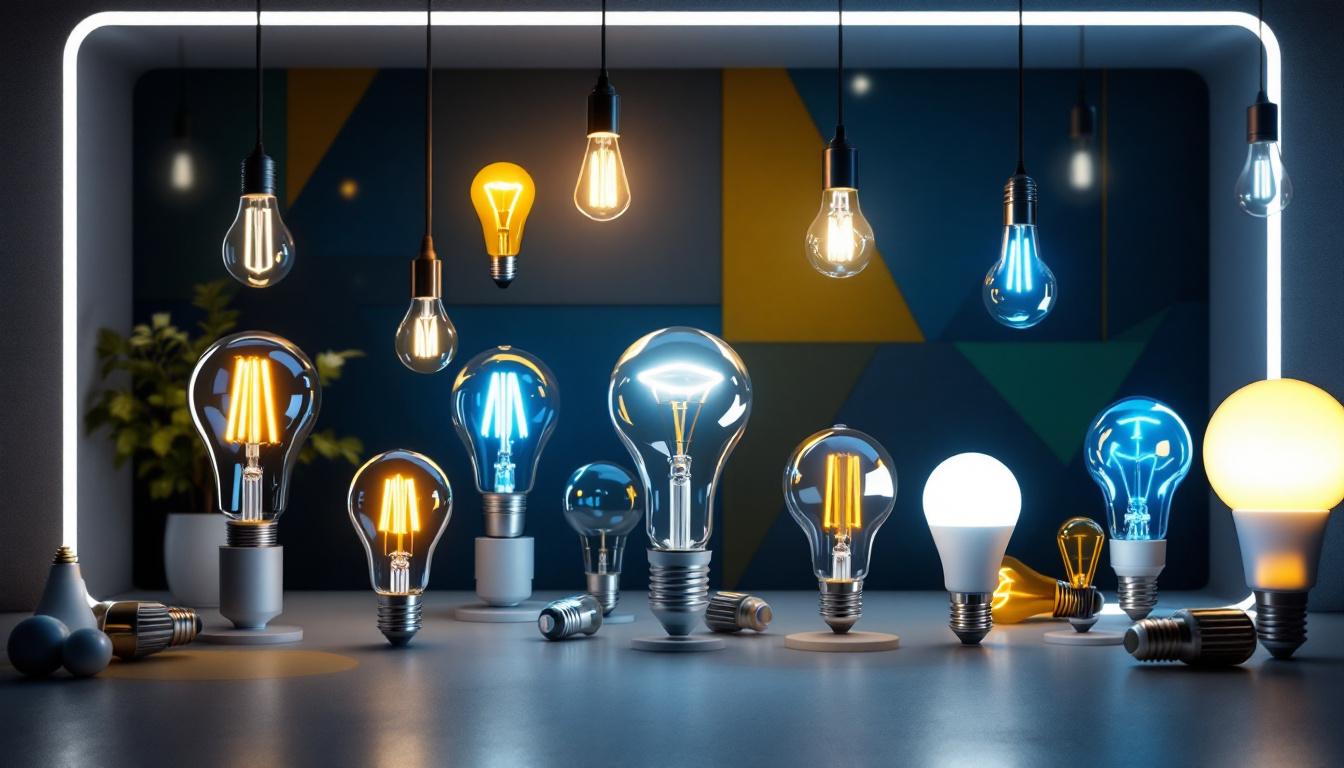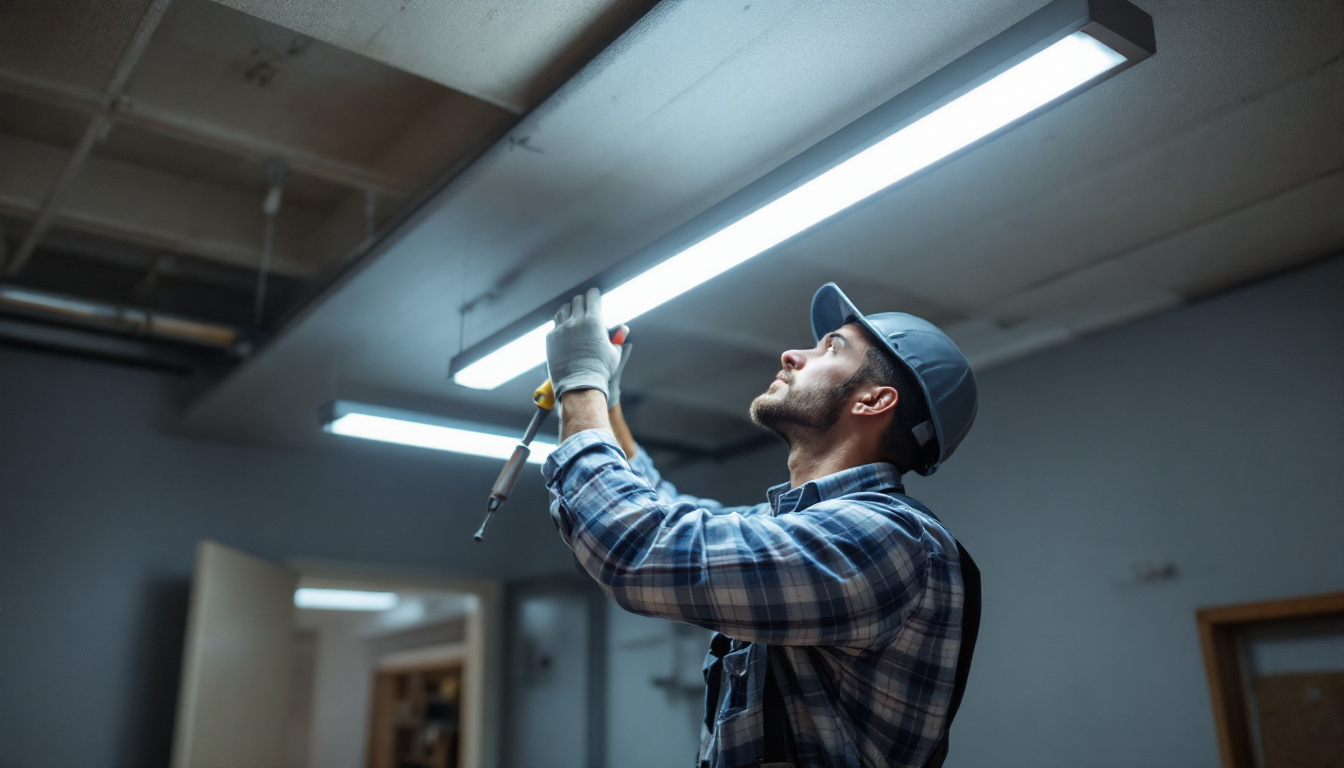
Lighting contractors play a crucial role in the construction and renovation industries. They are responsible for ensuring that spaces are not only illuminated effectively but also aesthetically pleasing. However, even experienced contractors can fall prey to common mistakes that can impact their work quality and client satisfaction. This article explores some of these pitfalls and offers insights on how to avoid them.
One of the most significant mistakes lighting contractors make is failing to invest enough time in the planning and design phase. This oversight can lead to a myriad of issues down the line, from mismatched fixtures to inadequate lighting levels.
Every project begins with understanding the client’s vision and requirements. Lighting contractors must engage in thorough discussions with clients to grasp their needs fully. This includes understanding the purpose of the space, the desired ambiance, and any specific preferences for fixtures or styles.
Without this foundational knowledge, contractors may choose inappropriate lighting solutions that do not meet the client’s expectations. Taking the time to listen and ask the right questions can save time and resources later on.
A well-thought-out lighting plan is essential for the successful execution of any project. This plan should include detailed layouts, fixture specifications, and lighting levels for each area. Failing to create a comprehensive plan can lead to inconsistencies in lighting quality and aesthetics.
Additionally, a good lighting plan should consider factors such as energy efficiency, compliance with local codes, and the integration of smart lighting technologies. By addressing these elements upfront, contractors can avoid costly revisions during installation.
Electrical load calculations are critical in ensuring that a lighting system operates safely and efficiently. Many contractors overlook this essential step, which can lead to circuit overloads and other electrical hazards.
Each circuit has a maximum load capacity, and exceeding this limit can cause breakers to trip or, worse, lead to electrical fires. Contractors must be diligent in calculating the total wattage of all fixtures and devices connected to a circuit. This ensures that the system operates within safe parameters.
Moreover, understanding the load capacity helps in selecting the right circuit breakers and wiring. By prioritizing these calculations, contractors can enhance the safety and longevity of their lighting installations.
When performing load calculations, contractors should also consider potential future expansions. Clients may wish to add more fixtures or upgrade existing ones down the line. By accounting for this in the initial calculations, contractors can avoid the hassle of rewiring or upgrading circuits later on.
Energy efficiency is a growing concern in the lighting industry, driven by both environmental considerations and rising energy costs. Contractors who neglect to incorporate energy-efficient solutions may find themselves at a disadvantage.
When selecting lighting fixtures, it is essential to consider their energy efficiency ratings. LED fixtures, for instance, consume significantly less energy than traditional incandescent bulbs while providing the same or even better light quality. By recommending energy-efficient options, contractors can help clients reduce their energy bills and carbon footprint.
In addition, many regions offer incentives for using energy-efficient lighting solutions. Contractors should stay informed about these programs and communicate them to clients, adding value to their services.
Smart lighting technologies are becoming increasingly popular due to their convenience and energy-saving capabilities. Contractors should educate themselves about these systems and consider integrating them into their projects. Features such as motion sensors, dimmers, and programmable timers can significantly enhance a space’s energy efficiency.
By embracing smart technology, contractors not only improve the functionality of their installations but also position themselves as forward-thinking professionals in a competitive market.
Lighting levels are crucial in creating comfortable and functional spaces. Contractors often make the mistake of not adequately assessing the required lighting levels for different areas, leading to poorly lit or overly bright environments.
To achieve optimal lighting levels, contractors should utilize tools such as light meters to measure illumination in various settings. This data can guide decisions on fixture placement, wattage, and types of bulbs used. Relying solely on subjective assessments can lead to inconsistencies and dissatisfaction.
By measuring and adjusting lighting levels based on actual data, contractors can create spaces that are not only visually appealing but also comfortable for occupants.
Different areas within a building have varying lighting requirements. For instance, task lighting in a kitchen should be significantly brighter than ambient lighting in a living room. Contractors must understand these distinctions to provide tailored solutions that enhance functionality and comfort.
Taking the time to analyze the specific needs of each space can lead to a more successful project outcome and happier clients.
While functionality is paramount, the aesthetic aspect of lighting is equally important. Contractors sometimes focus too heavily on technical specifications and overlook how the lighting design complements the overall decor and architecture of a space.
Lighting fixtures are not just functional; they are also design elements that can enhance a space’s aesthetics. Contractors should consider the style and finish of fixtures to ensure they align with the client’s vision and the overall design theme. For example, a modern home may benefit from sleek, minimalist fixtures, while a traditional setting may call for more ornate designs.
By thoughtfully selecting fixtures that harmonize with the space, contractors can elevate the overall design and create a cohesive look.
Layered lighting involves combining different types of lighting—ambient, task, and accent—to create a well-balanced and visually interesting environment. Contractors should educate clients about the benefits of layered lighting and incorporate it into their designs. This approach not only enhances functionality but also adds depth and character to spaces.
By focusing on both functionality and aesthetics, contractors can deliver lighting solutions that truly transform spaces.
Effective communication is essential in any contractor-client relationship. Misunderstandings or lack of communication can lead to dissatisfaction and project delays. Unfortunately, many lighting contractors underestimate the importance of keeping clients informed throughout the project.
From the outset, contractors should establish clear expectations regarding timelines, budgets, and project scope. By being transparent about what clients can expect, contractors can build trust and reduce the likelihood of disputes. Regular updates on progress and any potential issues that arise can also keep clients in the loop.
By fostering open communication, contractors can create a positive experience for clients, leading to repeat business and referrals.
Feedback is a valuable tool for improvement. Contractors should encourage clients to share their thoughts and concerns throughout the project. This dialogue not only helps identify potential issues early on but also demonstrates a commitment to client satisfaction.
By actively seeking feedback, contractors can refine their processes and enhance their services, ultimately leading to better project outcomes.
The lighting industry is constantly evolving, with new technologies and design trends emerging regularly. Contractors who do not prioritize ongoing education may find themselves falling behind their competitors.
Contractors should make a concerted effort to stay informed about the latest trends, technologies, and best practices in the lighting industry. This can involve attending workshops, seminars, and trade shows, as well as subscribing to industry publications.
By keeping abreast of developments, contractors can offer clients innovative solutions and demonstrate their expertise, enhancing their reputation in the field.
In addition to staying informed, contractors should invest in their professional development. This can include pursuing certifications, training programs, or specialized courses in lighting design and installation. Such credentials not only enhance a contractor’s skill set but also instill confidence in clients.
By prioritizing education and training, contractors can position themselves as industry leaders and provide exceptional service to their clients.
Safety should always be a top priority in any construction or renovation project. Unfortunately, some lighting contractors neglect safety protocols, putting themselves and others at risk.
Every region has specific codes and regulations governing electrical installations. Contractors must familiarize themselves with these guidelines and ensure compliance throughout the project. Failing to do so can result in fines, project delays, and even legal issues.
By prioritizing compliance with local codes, contractors can enhance safety and protect their business from potential liabilities.
Beyond regulatory compliance, contractors should implement safety best practices on the job site. This includes using appropriate personal protective equipment (PPE), ensuring proper ladder safety, and maintaining a clean and organized workspace. By fostering a culture of safety, contractors can minimize accidents and create a safer environment for everyone involved.
Ultimately, prioritizing safety not only protects individuals but also enhances the contractor’s reputation and reliability in the eyes of clients.
Lighting contractors face numerous challenges in their work, and avoiding common mistakes can significantly enhance their effectiveness and client satisfaction. By investing time in planning, understanding electrical requirements, prioritizing energy efficiency, and maintaining open communication, contractors can deliver exceptional lighting solutions.
Moreover, staying informed about industry trends, adhering to safety protocols, and focusing on aesthetics can further elevate a contractor’s reputation and success. By recognizing and addressing these common pitfalls, lighting contractors can position themselves as trusted professionals in a competitive market.
In the ever-evolving world of lighting design and installation, continuous improvement and a commitment to excellence are the keys to long-term success. By learning from past mistakes and striving for innovation, lighting contractors can illuminate the path to a brighter future.
Don’t let common mistakes dim your project’s potential. At LumenWholesale, we provide lighting contractors with the resources they need to shine. Our spec-grade lighting products meet the highest industry standards, ensuring that you deliver not just light, but excellence. With unbeatable wholesale prices and free shipping on bulk orders, you can illuminate your projects with confidence and cost-efficiency. Elevate your lighting game and experience the best value in wholesale lighting today.

Discover how pin base light bulbs can revolutionize your lighting projects by offering versatility, energy efficiency, and longevity.

Discover how LED lighting solutions can transform your warehouse into an energy-efficient powerhouse.

Discover the essentials of the Light Britness Scale, a crucial tool for lighting contractors.

Discover how 4 ft LED lights can enhance your business profitability.